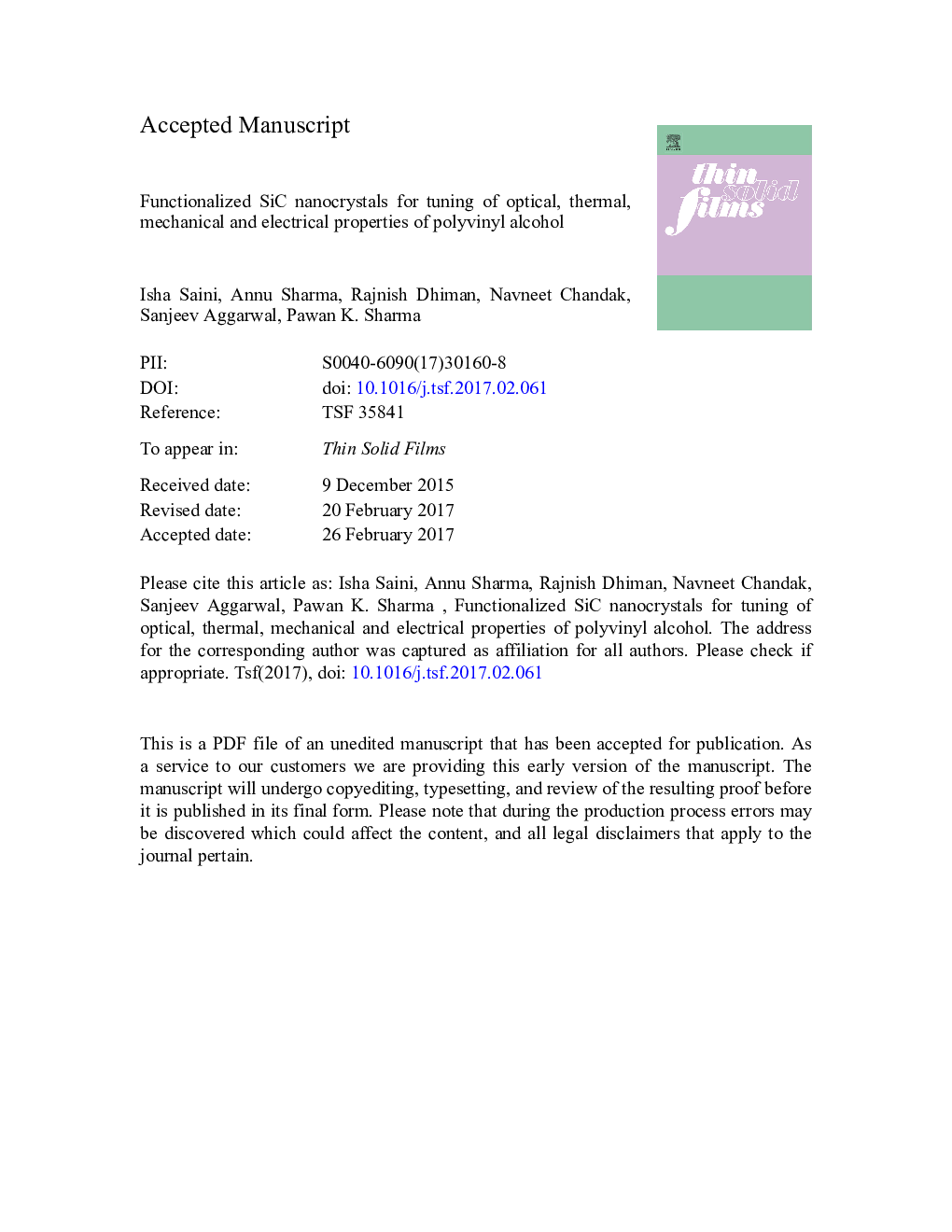| Article ID | Journal | Published Year | Pages | File Type |
|---|---|---|---|---|
| 5466280 | Thin Solid Films | 2017 | 36 Pages |
Abstract
Polyvinyl alcohol (PVA)-SiC nanocomposite films were prepared by incorporating functionalized Silicon Carbide (f-SiC) nanocrystals in PVA matrix. Structural characterization of SiC nanocrystals before and after the functionalization was carried out using Fourier transform infrared spectroscopy (FTIR), X-ray diffraction (XRD) and Thermogravimetric analysis (TGA). Transmission electron microscopy (TEM) and Scanning Electron Microscopy (SEM) were used to study the morphology and size distribution of f-SiC nanocrystals in PVA-SiC nanocomposite films. TEM and SEM images depict an improved dispersion of f-SiC nanocrystals in PVA matrix. UV-Visible absorption spectroscopy was employed to study the optical properties such as absorption coefficient (α), optical energy gap (Eg), Urbach's energy (Eu), refractive index (n) and dielectric constant of PVA and PVA-SiC nanocomposite films. Refractive index of PVA, at 550 nm wavelength, increased from 1.7 to 2.2 for PVA-SiC nanocomposite film containing 0.023 wt% f-SiC nanocrystals. TGA shows that the onset of thermal decomposition of PVA is only slightly affected by the addition of f-SiC nanocrystals. Knoop microhardness number has increased from 23 MPa for PVA to 45 MPa for PVA-SiC nanocomposite film containing 0.023 wt% f-SiC nanocrystals at an applied load of 9.8 mN indicating improved interfacial interaction. Current-voltage analysis indicated an increase in conductivity of PVA with the introduction of f-SiC nanocrystals. The conduction mechanism responsible for charge transport in PVA-SiC nanocomposite films was found to be voltage dependent. Schottky mechanism is the dominant conduction mechanism at high voltages whereas Poole Frenkel mechanism dominates at low voltages.
Keywords
Related Topics
Physical Sciences and Engineering
Materials Science
Nanotechnology
Authors
Isha Saini, Annu Sharma, Rajnish Dhiman, Navneet Chandak, Sanjeev Aggarwal, Pawan K. Sharma,
